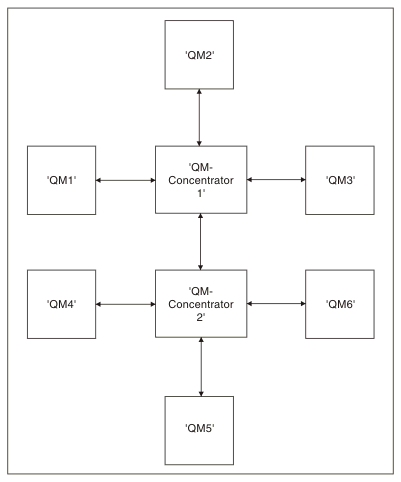Network planner
This chapter has discussed application designer, systems administrator, and channel planner functions. Creating a network assumes that there is another, higher level function of network planner whose plans are implemented by the other members of the team.
If an application is used widely, it is more economical to think in terms of local access sites for the concentration of message traffic, using wide-band links between the local access sites, as shown in Figure 1.
In this example there are two main systems and a number of satellite systems (The actual configuration would depend on business considerations.) There are two concentrator queue managers located at convenient centers. Each QM-concentrator has message channels to the local queue managers:
- QM-concentrator 1 has message channels to each of the three local queue managers, QM1, QM2, and QM3. The applications using these queue managers can communicate with each other through the QM-concentrators.
- QM-concentrator 2 has message channels to each of the three local queue managers, QM4, QM5, and QM6. The applications using these queue managers can communicate with each other through the QM-concentrators.
- The QM-concentrators have message channels between themselves thus allowing any application at a queue manager to exchange messages with any other application at another queue manager.
Figure 1. Network diagram showing QM-concentrators
Parent topic:
Networks
ic10750_
Home
